Table of Contents
It’s Going to go Fast
The wedding day timeline is the most crucial part of your wed- ding planning so we recommend you start thinking about it early. There are lots of things to consider when deciding how much time to plan for each segment of the day and we would be happy to offer advice on what we have seen to be successful timelines.
The pages that follow discuss the major events found in most weddings and provide some insight and advice on how to make the most of them. It is also wise to pad the timeline to allow some breathing room.
Getting Ready
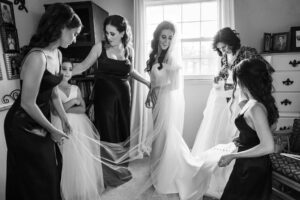 Photography coverage should start at least one hour before the ceremony or first look. At this point, you should be nearing the end of hair and makeup but not yet in your dress or suit/tux for the groom.
Photography coverage should start at least one hour before the ceremony or first look. At this point, you should be nearing the end of hair and makeup but not yet in your dress or suit/tux for the groom.
This is a great time to capture some of the details like the dress, shoes, jewelry, and stationery. Important details for the groom might be the watch, cufflinks, and bowtie. Having all of your important accessories together in the same place is very helpful.
If you can, hang the dress in a nice setting. A simple large window often works well. Using a nice hanger and removing the cardboard mold can also make a big difference.
Allow plenty of time for your hairdresser and makeup artist as it often takes longer than expected. You, as the bride, should not be the last one to have hair and makeup done so that you can get in your dress and still have time for some bridal portraits while hair and makeup are freshest. Your mother may also want to look her best if she is helping you get into your dress. This may mean having her hair and makeup done as well as changing into her dress.
Work with your hair and makeup artists to ensure that you are facing a window roughly three or four feet away during makeup prep. This will provide the best light for us to shoot in and the best light for them to work in.
Before you get into your dress, make an effort to clear the room of clutter as much as possible. Have your bridesmaids discard water bottles or anything else you see laying around. Pick a nice open spot near a window so that your mom and bridesmaids will have plenty of room to help you get into your dress.
The Ceremony
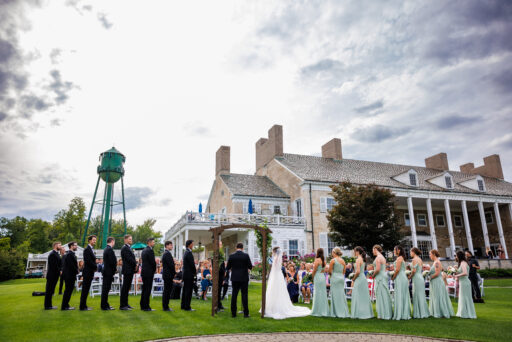 Church Restriction
Church Restriction
Churches can be a stunning backdrop for your religious ceremony. Just keep in mind that many of them have restrictions on where photographers can shoot from during the ceremony. It is
a good idea to inquire about any restrictions before booking a church or ask for an exception. Some churches ask that we only shoot from the back of the church or the balcony. This can make it challenging to capture your parent’s reactions and can limit the variety of perspectives we can shoot from. Discussing these restrictions with your officiant is an important step in choosing your ceremony location.
We do our best to remain discreet and respectful at all times. This includes turning off our flashes and using a silent mode on our cameras.
The First Kiss
It seems odd to be mentioning this here right? Not really. We’ve seen some kisses last a fraction of a second, barely allowing
us time to photograph it. We aren’t suggesting this turn into a minute-long makeout session. We do however want you to think about the fact that THIS is your first kiss as husband and wife, so make it worthwhile!
You may even want to ask the officiant to step off to the side to you are the only two people in the frame during that moment.
An Unplugged Ceremony
Asking your guests to tuck phones and tablets away during the ceremony and formal reception events is a great way to encourage them to remain in the moment and experience the day as fully as possible.
As much as we try to avoid the phones or cameras of guests, they often end up in the sides and backgrounds of ceremony and first dance photos and they tend to stand out as a distraction. This is especially the case for bright screens in dark rooms.
We completely understand why your guests will want to take some photos for their own enjoyment, but when it comes to the really important stuff, just trust us; we have it covered!
Receiving Lines
Setting time aside to greet your guests is a necessary and much-appreciated thing to do. A common way to do this is to have a receiving line after the ceremony. If you plan to do this,
be sure to schedule plenty of time as they often move slower than expected. 30 minutes per 100 guests is a good starting point.
If you are looking to speed things up, you can also opt to release your guests by rows which gives you more control of the pace. Additionally, some couples skip the receiving line altogether and greet their guests during cocktail hour or go table to table during the reception.
Family and Bridal Party Formals
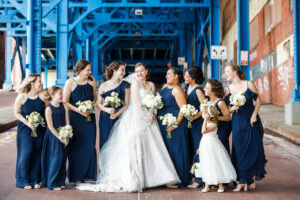 Family formals are a very important part of the day but also something that everyone wants to move through quickly and efficiently.
Family formals are a very important part of the day but also something that everyone wants to move through quickly and efficiently.
During our final planning meeting, we will discuss our list of “must-have” family formals and see if there are any groups or combinations specific to your family that we should cover. A good rule is to plan for three to five minutes per group so choose carefully. This usually results in about 30 minutes set aside for family formals at the ceremony location.
Everyone to be included in the formals should be informed when and where they will be needed. A good time to do this
is at the rehearsal dinner. We have seen plenty of siblings and grandparents wander off assuming they were not needed so clear communication with your family members is very important.
Creative Portraits
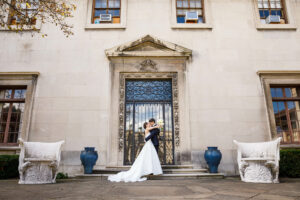 Creative portraits are one of our favorite parts of the day: capturing you being you! We want this to be a fun process for you and your bridal party. This is the perfect opportunity to express yourselves.
Creative portraits are one of our favorite parts of the day: capturing you being you! We want this to be a fun process for you and your bridal party. This is the perfect opportunity to express yourselves.
Don’t worry about stiff poses and maintaining a smile for hours on end, we’ll keep it relaxed and easy-going. Your job is to enjoy the process and just be yourself!
We recommend at least 1 hour to capture just the two of you and an additional 30 minutes to photograph you with your bridal party. We don’t always get that much time and sometimes we get more. We can make do with the former and we LOVE getting the latter.
The Reception
The ceremony is over, we have some amazing creative portraits in the bag, and now it’s time to celebrate! At this point in the day, you will see a lot less direct interaction with us but that doesn’t mean we’re not within arms reach capturing the action as it happens. Your guests are there for you, and we want you to be there for them, so don’t worry about us. We have it covered.
Reception Formalities
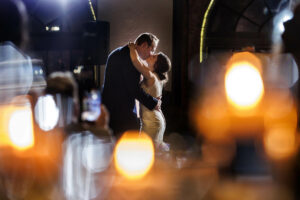 At the bare minimum, we would suggest planning your photography coverage to cover all of the reception formalities, such as toasts, your first dance, cake cutting, parent dances, and so forth. Getting these done early in the reception before dinner often means a more relaxed and comfortable dinner and an uninterrupted open dance floor to follow.
At the bare minimum, we would suggest planning your photography coverage to cover all of the reception formalities, such as toasts, your first dance, cake cutting, parent dances, and so forth. Getting these done early in the reception before dinner often means a more relaxed and comfortable dinner and an uninterrupted open dance floor to follow.
Let’s Dance
While documenting the reception formalities is very important, the best stuff usually happens when people let down their guard and just go out and have a good time on the dance floor. If you want your guests to dance, the very best thing you can do is get out on the dance floor yourself. The guests will look to you to set the tone, so make it count.
For most weddings, about an hour of open dance floor coverage provides a really good cross-section of your guests and the action while they are still fresh. Past an hour, clothes start getting a little more disheveled and noses and cheeks get a little more flushed. Those images can be the sign of a good party.
Shortly before we finish coverage for the night, we will grab the two of you for some quick end of the night portraits. This is a great time to take a moment to connect with each other and soak in everything that has happened throughout the day. This also gives us some great material to finish off the album design and often generates some of our favorite images of the day.
